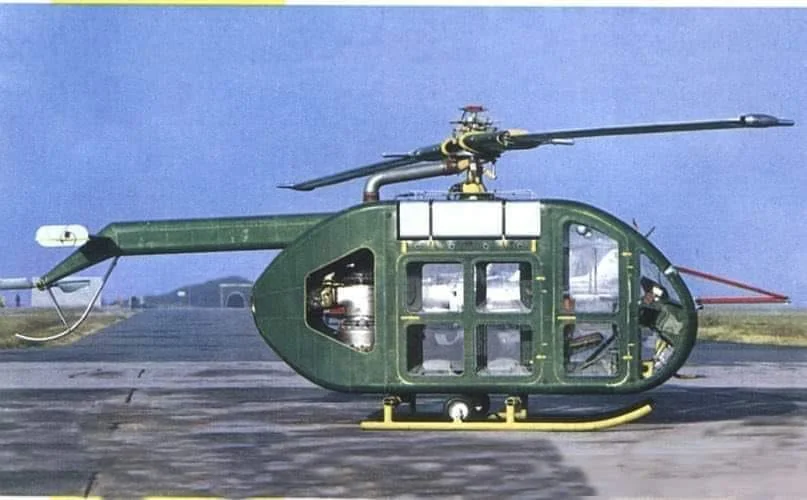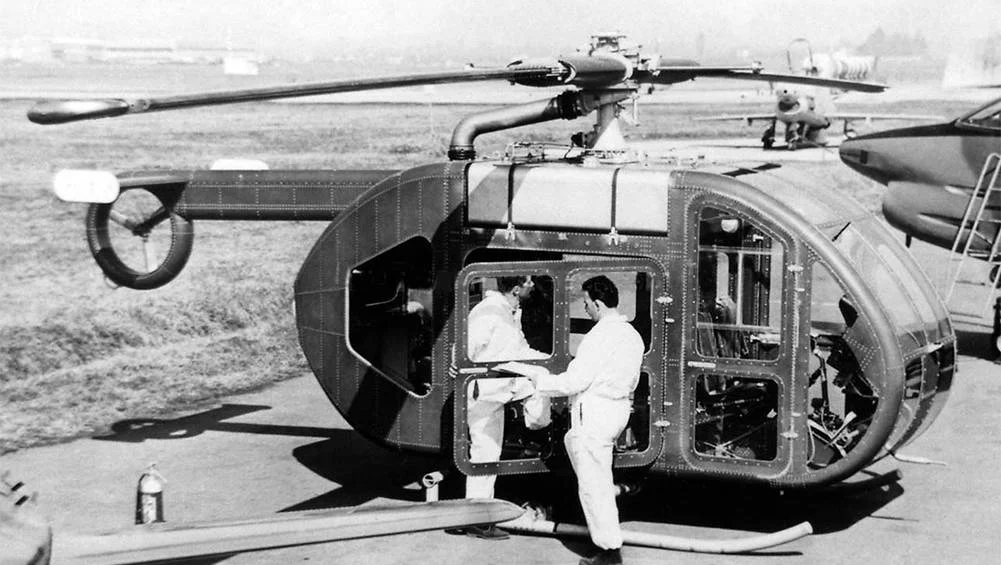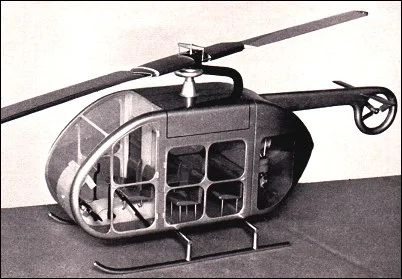The Fiat 7002 was a novel experimental helicopter designed for both passenger transport and a variety of utility purposes.
Its distinguishing feature is the unusual “cold jet” rotor system, in which compressed air, supplied by a Fiat 4700 turbogenerator, is released from the blade tips to power the main rotor without combustion.

This two-blade rotor system was made from stainless steel, with internal ducts for air propulsion and linked blades for load distribution and pitch adjustment.
The helicopter’s structure is predominantly light alloy, divided into three sections: the front part with side-by-side pilot seating, a middle cabin for passengers or cargo, and a rear section holding the power plant.

It has a small semi-monocoque tail boom that supports a small, ducted tail rotor and a horizontal stabilizer, allowing it outstanding maneuverability, particularly at low speeds and during autorotation.
The Fiat 7002’s landing gear is a dual skid arrangement. It is powered by a vertically housed Fiat 4700 turbogenerator with a fuel capacity of 525 liters. The cabin can accommodate two pilots with dual controls and features big doors for convenient access.
The center cabin may accommodate up to five passengers or a cargo space of 2.5 cubic meters.
The Fiat 7002’s unusual design, commissioned by the Italian Defense Ministry in 1959 for the Italian Air Force, had a flat-sided, semi-round fuselage and a short tail-boom with a shrouded tail rotor.

Its first and only prototype flew on January 26, 1961, but the project ended in 1963. Fiat’s third attempt at helicopter design, the high-speed, three-seat Fiat 7005 with a pusher propeller, went unbuilt, prompting the company’s retirement from helicopter research in 1967.








